It’s Not Going Anywhere… Our Concrete Obsession
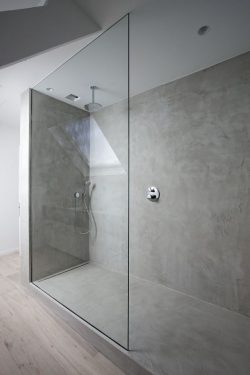
#ThingsWereObsessedWith
It’s Not Going Anywhere… Our Concrete Obsession
You know it’s going to be an incredible post when the title is a dad joke! In all seriousness, I cannot get enough of concrete. Okay, that sounded weird, but bear with me.
The evolution of concrete from a staple to an accessory has been both fun and interesting to watch. Concrete used to be mainly just for driveways, walkways and foundations but it has transitioned into so much more. Of course, people are still using it for those things – because it rocks (no pun intended) – but even how it’s being used in those forms is evolving.
Driveways are being stamped, walkways are being offset and it’s not stopping there. This versatile medium is making its way indoors. Concrete floors are popping up in both commercial and residential settings. It’s being used as counter tops, shower surfaces, in flower beds and it’s finding itself to be a rising star in home décor.
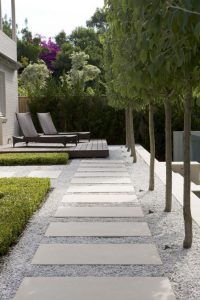
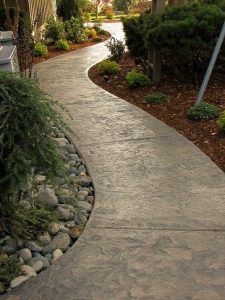

As it grows in popularity, so do the amount of options available when selecting finishes for your concrete. You can stain it just about any color and texture or stamp it however your heart desires (even leaves!). There are seemingly endless numbers of companies dedicated to concrete, some of which specialize in certain types and others work solely within their niche. There’s concrete designed to be poured without leveling (which is commonly used in smaller areas like bathroom counter tops or arts and crafts), cement that has rocks in it for added strength in larger outdoor applications, cement mixed with sand, the list goes on and on.
WAIT! Let’s take a quick commercial break to answer a question that some of you are probably having. I’m sure you noticed I used the word “cement” instead of “concrete”. There’s a method to the madness. Although, the words are often used interchangeably, like “Kleenex” and “Tissue”, they’re actually different things… well, sort of. Cement is an ingredient in concrete. According to the Concrete Contractors Association of Greater Chicago (wow, that was a mouthful):
“In its simplest form, concrete is a mixture of paste and aggregates (sand & rock). The paste, composed of cement and water, coats the surface of the fine (sand) and coarse aggregates (rocks) and binds them together into a rock-like mass known as concrete.
AND NOW, back to our regularly scheduled programming…
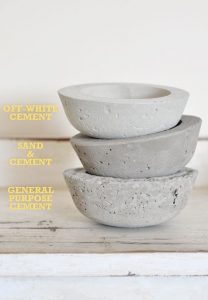
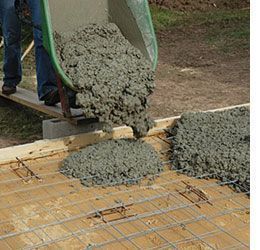 In small batches, concrete is relatively easy to work with, especially when you start using things like self-leveling or feather finish concrete. When it comes to larger scale projects, there’s a lot more that goes into it than just building a form and pouring it in. If you’re not ready to reinforce with rebar, the word “floating” is only something you do in a pool and “trowel” sounds foreign, I would strongly recommend enlisting the help of professionals. Whether you’re going for a modern look, loving the farmhouse trend, or want something low maintenance, concrete is a great option!
In small batches, concrete is relatively easy to work with, especially when you start using things like self-leveling or feather finish concrete. When it comes to larger scale projects, there’s a lot more that goes into it than just building a form and pouring it in. If you’re not ready to reinforce with rebar, the word “floating” is only something you do in a pool and “trowel” sounds foreign, I would strongly recommend enlisting the help of professionals. Whether you’re going for a modern look, loving the farmhouse trend, or want something low maintenance, concrete is a great option!
Are you as obsessed with concrete as we are?! Let us know in the comment section below!
Share your concrete stories, pictures, and obsessions with us on Instagram @norcalhomesanddevelopment or email us at taylor@norcalhomesllc.com